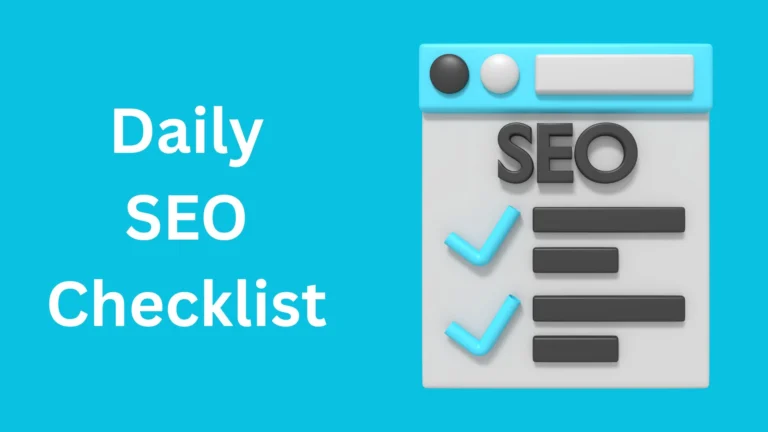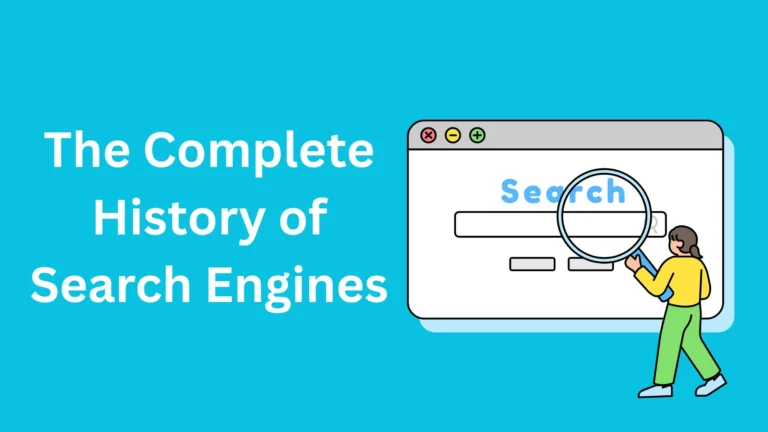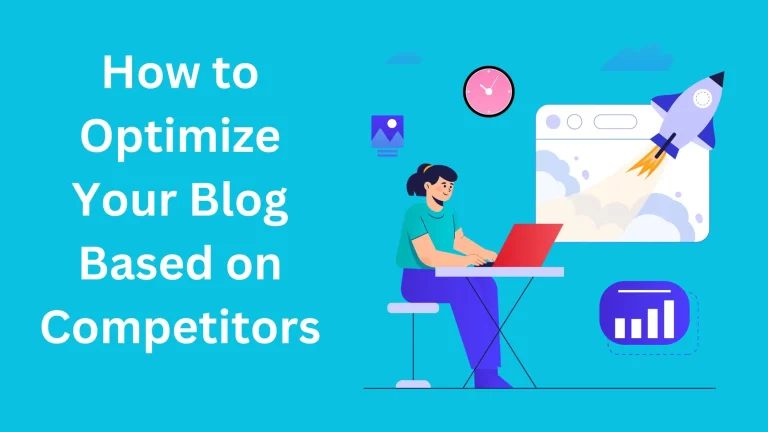The Ultimate Step-by-Step Guide to Implementing a B2B SEO Strategy

B2B SEO (Business-to-Business Search Engine Optimization) is a strategic approach that helps businesses rank higher in search engines, attract decision-makers, and generate qualified leads. Unlike B2C SEO, B2B SEO focuses on longer sales cycles, niche audiences, and high-value content.
In this guide, we’ll walk you through a data-driven, practical, and actionable B2B SEO strategy. Each step is designed to optimize your website for organic traffic, increase brand visibility, and drive conversions.
If you are new to SEO, then look into our basic of SEO post.
Step 1: Define Your B2B SEO Goals and KPIs
Why It Matters:
Setting clear goals and KPIs helps measure success and align SEO efforts with business objectives.
Actionable Steps:
- Identify Key Business Goals – Are you aiming for lead generation, brand awareness, or customer retention?
- Choose Relevant KPIs – Track metrics such as organic traffic, keyword rankings, conversion rates, and engagement metrics.
- Set SMART Goals – Make your goals Specific, Measurable, Achievable, Relevant, and Time-bound.
Comparative Analysis: B2B vs. B2C SEO Goals
| Metric | B2B SEO | B2C SEO |
|---|---|---|
| Focus | Lead Generation | Direct Sales |
| Sales Cycle | Longer | Shorter |
| Content Type | Whitepapers, Case Studies | Product Pages, Reviews |
| Decision-Making | Multiple Stakeholders | Individual Buyers |
Step 2: Conduct Comprehensive Keyword Research
Why It Matters:
Keyword research ensures you target terms your B2B audience is searching for, improving visibility and ranking potential.
Actionable Steps:
- Use Keyword Research Tools – Leverage tools like Google Keyword Planner, Ahrefs, or SEMrush.
- Focus on Long-Tail Keywords – Example: Instead of “CRM software,” target “best CRM software for enterprise sales.”
- Analyze Competitor Keywords – Identify what high-ranking competitors are targeting.
- Cluster Keywords by Intent – Group into Informational, Navigational, Transactional, and Commercial Investigation categories.
Step 3: Optimize On-Page SEO Elements
Why It Matters:
On-page SEO ensures your website’s structure, content, and HTML elements are optimized for search engines.
Actionable Steps:
- Title Tags & Meta Descriptions – Ensure each page has a unique and keyword-rich title and description.
- Header Tags (H1-H6) – Structure content logically to improve readability and SEO.
- Internal Linking Strategy – Link relevant pages to enhance site navigation and SEO.
- Image Optimization – Use descriptive alt texts and compress images for faster load times.
Data-Driven Insight:
- Pages with structured internal linking see a 40% increase in organic traffic.
Step 4: Develop a High-Quality Content Strategy
Why It Matters:
B2B buyers rely on in-depth content to make informed purchasing decisions.
Actionable Steps:
- Create Pillar & Cluster Content – Example: A pillar page on “Enterprise Cybersecurity” with cluster blogs like “Cybersecurity Trends 2024.”
- Prioritize Data-Driven Content – Use statistics, case studies, and reports to add credibility.
- Optimize for E-E-A-T – Ensure content demonstrates Experience, Expertise, Authoritativeness, and Trustworthiness.
- Leverage Multiple Formats – Blog posts, whitepapers, eBooks, infographics, and videos.
Comparative Analysis: Content Types for B2B vs. B2C
| Content Type | B2B Usage | B2C Usage |
| Blog Posts | Thought Leadership | Listicles & Guides |
| Whitepapers | Industry Reports | Rarely Used |
| Case Studies | Proof of Success | Customer Reviews |
| Webinars | Lead Nurturing | Entertainment |
Step 5: Implement a Strong Technical SEO Foundation
Why It Matters:
Technical SEO ensures that search engines can crawl and index your website efficiently.
Actionable Steps:
- Improve Site Speed – A slow site can lead to a 30% increase in bounce rate.
- Ensure Mobile-Friendliness – 70% of B2B buyers research on mobile.
- Fix Broken Links & Redirects – Maintain a seamless user experience.
- Use Schema Markup – Enhance search visibility with structured data.
Step 6: Build a Robust B2B Link-Building Strategy
Why It Matters:
High-quality backlinks increase domain authority and search rankings.
Actionable Steps:
- Guest Posting – Publish content on industry-relevant blogs.
- Digital PR – Get featured in industry news or authoritative sites.
- Broken Link Building – Find and replace broken links with your content.
- Leverage Partnerships – Collaborate with industry leaders for mutual backlinking.
Data Insight:
- Websites with authoritative backlinks rank 3.8 times higher on Google.
Step 7: Optimize for Local and International SEO (If Applicable)
Why It Matters:
For businesses targeting specific regions or global audiences, localized SEO helps reach the right market.
Actionable Steps:
- Optimize Google My Business (For local SEO targeting)
- Use Hreflang Tags (For multilingual sites)
- Localize Content (Adapt messaging for different regions)
Step 8: Implement an Effective B2B SEO Measurement & Analytics Plan
Why It Matters:
Tracking performance helps refine strategies for maximum impact.
Actionable Steps:
- Use Google Analytics & Search Console – Monitor organic traffic and keyword performance.
- Track Conversion Metrics – Leads generated, form submissions, demo requests.
- Run SEO Audits Regularly – Identify technical and content gaps.
Conclusion
Implementing a B2B SEO strategy requires a structured approach, from setting clear goals to tracking performance. By following these steps, businesses can enhance their online presence, attract the right audience, and drive long-term success.
Start by assessing your current SEO strategy, setting clear objectives, and implementing data-driven optimizations. SEO is a continuous process—keep refining your approach to stay ahead in the competitive B2B landscape.
Also read the AI search rankings to understand better for optimizations.

With 5+ years of SEO experience, I’m passionate about helping others boost their online presence. I share actionable SEO tips for everyone—from beginners to experts.





